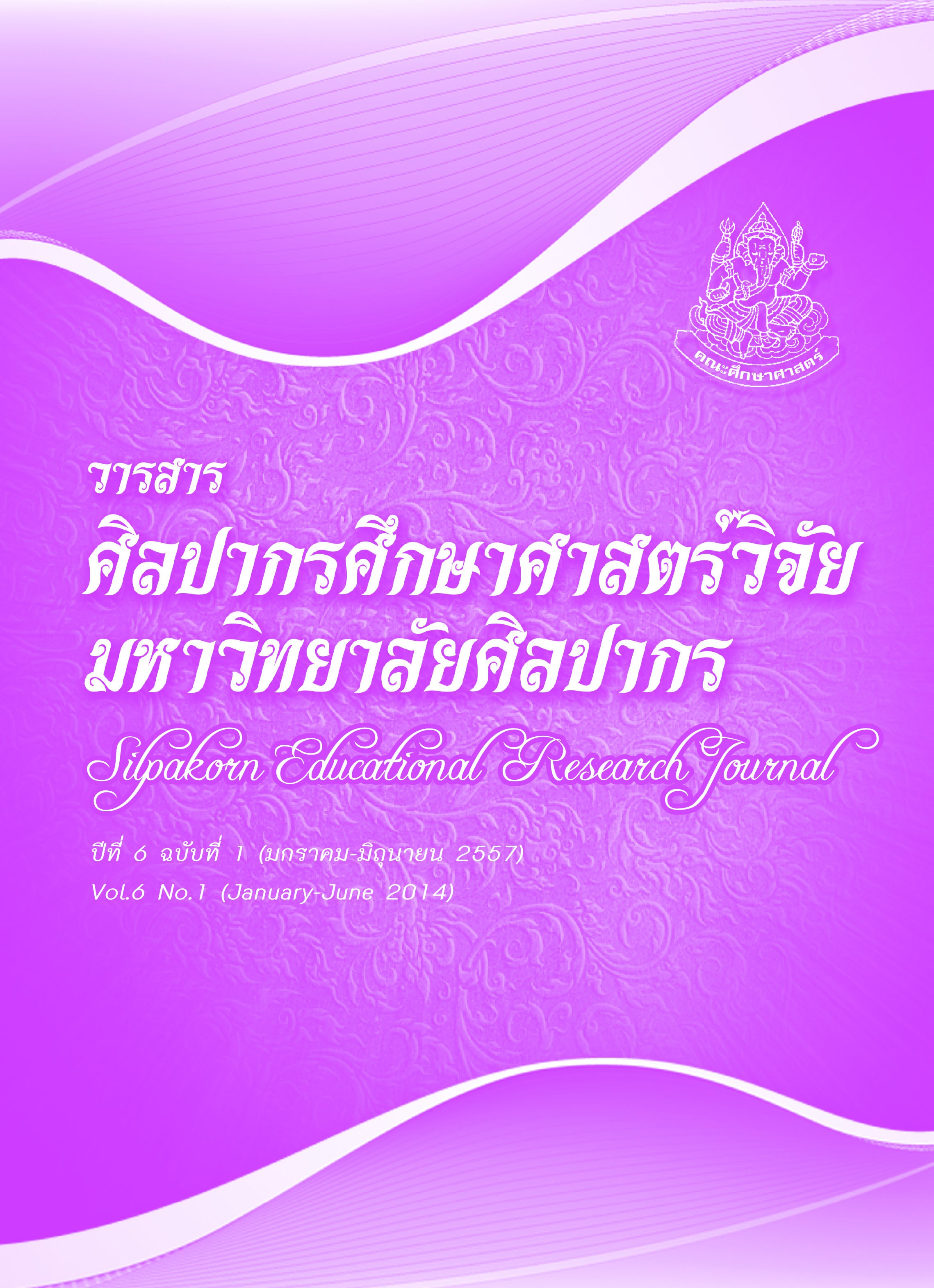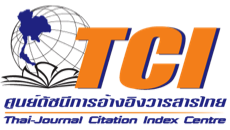ผลของการจัดการเรียนรู้แบบมีส่วนร่วมที่มีต่อเจตคติ ในการเรียนพลศึกษาของนักเรียนชั้นมัธยมศึกษาปีที่ 5
คำสำคัญ:
การจัดการเรียนรู้แบบมีส่วนร่วม, เจตคติในการเรียนพลศึกษาบทคัดย่อ
การวิจัยในครั้งนี้มีวัตถุประสงค์คือ 1) เพื่อศึกษาผลของการจัดการเรียนรู้แบบมีส่วนร่วมที่มีต่อเจตคติในการเรียนพลศึกษาของนักเรียนชั้นมัธยมศึกษาปีที่ 5 และ 2) เพื่อเปรียบเทียบเจตคติที่มีต่อการเรียนพลศึกษาก่อนและหลังการจัดการเรียนรู้แบบมีส่วนร่วม ประชากรที่ใช้ในการวิจัยในครั้งนี้ คือ นักเรียนระดับชั้นมัธยมศึกษาปีที่ 5 โรงเรียนสาธิตแห่งมหาวิทยาลัยเกษตรศาสตร์ วิทยาเขตกำแพงแสน ศูนย์วิจัยและพัฒนาการศึกษา จำนวน 120 คน กลุ่มตัวอย่างที่ใช้ในการวิจัยในครั้งนี้ ได้จากการสุ่มอย่างง่าย โดยการจับสลาก จำนวนนักเรียน 40 คน เครื่องมือที่ใช้ในการวิจัย คือ 1) แผนการจัดการเรียนรู้แบบมีส่วนร่วมวิชาซอฟท์บอล ชั้นมัธยมศึกษาปีที่ 5 2) แบบวัดเจตคติที่มีต่อการเรียนวิชาพลศึกษา 3) แบบสังเกตพฤติกรรมการเรียนพลศึกษา สถิติที่ใช้ในการวิจัย คือ 1) สถิติพื้นฐาน ได้แก่ คะแนนเฉลี่ย และความเบี่ยงเบนมาตรฐาน 2) สถิติเชิงสรุปอ้างอิงที่ใช้ในการทดลอง เปรียบเทียบก่อนและหลังการทดลอง ใช้สถิติ t-test for dependent ผลการวิจัยสรุปได้ว่า 1) ผลการจัดการเรียนรู้แบบมีส่วนร่วมทำให้นักเรียนมีเจตคติในการเรียนพลศึกษาอยู่ในระดับสูง และพฤติกรรมของนักเรียนอยู่ในระดับดี 2) นักเรียนมีเจตคติก่อนและหลังการจัดการเรียนรู้แตกต่างกัน อย่างมีนัยสำคัญที่ระดับ 0.05
This study aimed 1) to examine result of Participatory Learning Management on attitudes towards Physical Education learning among Matthayomsuksa 5 students and 2) to compare the students’ attitudes towards Physical Education learning before and after Participatory Learning Management. The population of this research is 120 Matthayomsuksa 5 students of Kasetsart University Laboratory School Kamphaeng Saen Campus Center for Educational Research and Development. The study sample which was selected by Simple Ramdom Sampling through method of drawing lots consisted of 40 Matthayomsuksa 5 students. The research instruments were 1) the Participatory Learning Management of Softball Class for Matthayomsuksa 5 students, 2) the test of attitudes towards Physical Education learning, and 3) the observatory form of Physical Education learning. The statistical techniques used were 1) descriptive statistics: arithmetic mean and standard deviation, and 2) inferential statistics for comparison before and after the experiment: t-test for the dependents. The study findings can be summarized as follows: 1) Result of Participatory Learning Management on attitudes towards Physical Education learning, they were found at the high levels both before and after the Participatory Learning Management. The students’ learning behaviors were all at the good level. 2) When the attitudes before and after were compared, they were significantly different from each other at the statistical level 0.05.





